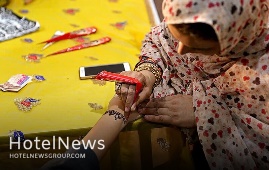
Clusters of tourism insiders, artisans, and artists who are natives of Qeshm will stage cultural nights in Tehran to put the spotlight on the southern Iranian island. Residents of Tehran will be exposed to the local culture, traditions, handicrafts, and tourist destinations of Qeshm during the three-day festival, which starts on Oct. 20, a local cultural official has announced. A group of 15 artists from Qeshm will participate in the event as ambassadors of Qeshm’s culture, art, and literature, Hamed Biazar said on Friday. One of the programs of Qeshm cultural nights will be the display of some 20 photos of the beauties of the Island, taken by some professional local photographers, he added. One of the main objectives of the event is to provide people with an overview of Qeshm Island, including tourist information on sightseeing sites, accommodations, and hotels, he noted. Sales exhibits and workshops on indigenous handicrafts, souvenirs, garments, as well as live performances of traditional music are also parts of the event, he mentioned. He also expressed hope that holding such events will allow Qeshm to be promoted as a tourist destination once the coronavirus crisis is over. Qeshm Island is a heaven for eco-tourists as it embraces wide-ranging attractions such as the Hara marine forests and about 60 villages dotted mostly across its rocky coastlines. The island also features geologically eye-catching canyons, hills, caves, and valleys, most of which are protected as part of the UNESCO-tagged Qeshm Island Geopark, itself a haven for nature-lovers. Many travelers to Qeshm believe that the Stars Valley or Valley of Stars is a “MUST SEE”. It is home to bizarre-shaped gorges, tall pillars, canyon-like paths, hollowed-out spaces as well as the smooth and round stones, which have been formed by the wind and rain eroding the soil, rocks, and stones. Locals believe that a star once fell on this area thereby creating the rocky shapes that make it seem as if from another planet.
Create: Oct 16, 2021 Edit: Oct 16, 2021 Regional News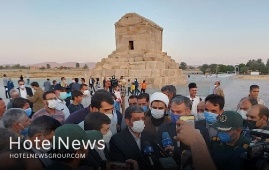
The UNESCO-registered Pasargadae is a symbol of human civilization in ancient Iran, tourism minister Ezzatollah Zarghami has announced.There is no doubt that Pasargadae belongs to Cyrus the Great, who is regarded as a legend in the world, whether or not he was buried here, it is important to respect him as an Iranian, the minister said on Thursday. He made the remarks during a visit to the majestic World Heritage site, which is situated in the southern Fars province. “Pasargadae stands out for its uniqueness on the international stage, if not as a special place, but as a symbol of civil and human development,” he noted. The tourism status of Pasargadae was among issues discussed with President Ebrahim Raisi during his current visit to Fars…., and funds have been considered for it, the minister added. He also noted that the majority of funds will be allocated to develop infrastructure and facilities, and making repairs for the public benefit, he said. There has already been an allocation of 200 billion rials ($4.7 million at the official exchange rate of 42,000 rials per dollar) to the historical site, he mentioned. Situated about 50 km north of Persepolis, Pasargadae embraces outstanding examples of the first phase of royal Achaemenid art and architecture and exceptional testimonies of Persian civilization. Cyrus was the founder of the Achaemenid Empire which at its greatest extent stretched from the Balkans to the Indus Valley, spanning 5.5 million square kilometers. The Persian king declared the world’s first charter of human rights, also known as the Cyrus Cylinder. Despite the minimal nature of the ruins, they make a good introduction to the wonders of Persepolis, some 60km to the south. Best visited en route from Yazd or Isfahan to Shiraz, most people fit them into an extended tour from Persepolis with stops at Naqsh-e Rostam and Naqsh-e Rajab.
Create: Oct 16, 2021 Edit: Oct 16, 2021 Regional News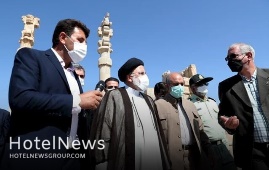
Iranian President Seyyed Ebrahim Raisi on Thursday said the UNESCO-registered Persepolis is an epitome of the great Persian art. Persepolis displays the great artistic achievements of Iranians from past millennia, which are still remarkable and admirable after so many centuries, the president said. He made the remarks during his visit to the prestigious site, which was once the ceremonial capital of the mighty Achaemenid Empire (c. 550 – 330 BC). [The ruins of] Persepolis is also conveying a message to oppressors warning them of the fate of those who are cruel to humanity, he added. The royal city of Persepolis ranks among the archaeological sites which have no equivalent, considering its unique architecture, urban planning, construction technology, and art. Persepolis, also known as Takht-e Jamshid, whose magnificent ruins rest at the foot of Kuh-e Rahmat (Mountain of Mercy) is situated 60 kilometers northeast of the city of Shiraz in Fars province. The city was burnt by Alexander the Great in 330 BC apparently as revenge to the Persians because it seems the Persian King Xerxes had burnt the Greek City of Athens around 150 years earlier. The city’s immense terrace was begun about 518 BC by Darius the Great, the Achaemenid Empire’s king. On this terrace, successive kings erected a series of architecturally stunning palatial buildings, among them the massive Apadana palace and the Throne Hall (“Hundred-Column Hall”). This 13-ha ensemble of majestic approaches, monumental stairways, throne rooms (Apadana), reception rooms, and dependencies is classified among the world’s greatest archaeological sites. Persepolis was the seat of the government of the Achaemenid Empire, though it was designed primarily to be a showplace and spectacular center for the receptions and festivals of the kings and their empire. The site is marked by a large terrace with its east side abutting the Kuh-e Rahmat (“Mount of Mercy”). The other three sides are formed by a retaining wall, varying in height with the slope of the ground from 13 to 41 feet (4 to 12 meters); on the west side, a magnificent double stair in two flights of 111 short stone steps leads to the top. On the terrace are the ruins of several colossal buildings, all constructed of a dark gray stone (often polished to a marble-like surface) from the adjacent mountain. According to Britannica, the stone was cut with the utmost precision into blocks of great size, which were laid without mortar; many of them are still in place. Especially striking are the huge columns, 13 of which still stand in the audience hall of Darius I (the Great; reigned 522–486 BC), known as the Apadana, the name given to a similar hall built by Darius at Susa. There are two more columns still standing in the entrance hall of the Gate of Xerxes, and a third has been assembled there from its broken pieces. In 1933 two sets of gold and silver plates recording in the three forms of cuneiform—ancient Persian, Elamite, and Babylonian—the boundaries of the Persian empire were discovered in the foundations of Darius’s hall of audience. Several inscriptions, cut in stone, of Darius I, Xerxes I, and Artaxerxes III indicate to which monarch the various buildings were attributed.
Create: Oct 16, 2021 Edit: Oct 16, 2021 Regional News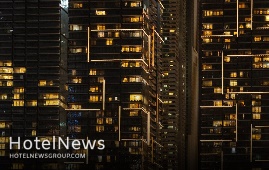
Recent weather disasters, social unrest and a heightened awareness of racial bias have prompted hoteliers to double down on their commitments to become better corporate citizens and do more to address environmental, social and governance (ESG) issues. These are moves toward a social good, sure, but also have ramifications on hotel company P&Ls. Marriott International, for one. It recently announced a commitment to reach net-zero emissions of greenhouse gases by 2050. The pledge follows the previous setting of goals by the massive global company to reduce single-use plastics, cut down on food waste by 50% and significantly amp up the diversity of suppliers, among other measures. InterContinental Hotels Group is another. Earlier this year it announced plans “to make a positive difference for our people, communities and planet over the next decade.” The company’s new commitments include a 15% “absolute reduction” of energy use and carbon emissions; a reduction of waste that will include the elimination of single-use items and a “prevent, donate, divert” plan for food waste; increased water conservation efforts; new programs to “improve the lives of 30 million people in our communities around the world” and, for employees, to “champion a diverse culture where everyone can thrive.” All of these measures benefit the public good and also have impact on a hotel’s ability to control expenses, particularly in regard to energy management. “Saving energy can—and will—impact profitability,” said Denise Naguib, VP of Sustainability and Supplier Diversity at Marriott. “For many properties, the second largest cost after labor is energy, and in some markets it actually supersedes labor, so this is a real cost that impacts the bottom line.” Energy By The Numbers Energy costs are mainly variable and there are ways to control this expense, which is of the moment now as the expense creeps back up. In U.S. hotels, the cost of electricity jumped to $4.31 in August on a per-available-room basis, compared to $3.35 in July 2020, according to HotStats data. Year-to-date August, hotels were paying $3.32 for energy, compared to $2.94 over the same period a year prior. Europe saw a similar rise, with August electricity at €6.26 compared to €8.26 in the same month last year, and €8.67 in the first eight months of this year compared to €8.26 in the same period a year ago. Small Steps, Big Rewards Operational changes large and small can help drive energy efficiency. “One of our hotels that had a high energy bill brought on an energy manager,” Naguib said. “That person found energy efficiencies and reduced the property’s energy bill by $1 million.” On a broader level, she added, properties need to empower engineers and others to find energy efficiencies, such as shutting a foyer light that’s kept on all day, deploying technology to regulate temperatures and electric usage throughout the space. Smart uses of food, such as saving the ends of vegetables for stews or making more scrambled eggs at the start of breakfast to avoid whipping up too many at the end of service, can have an impact. Energy purchasing decisions and the education of employees also can make a difference. That hands-on approach also can be used when working to make hoteliers’ purchasing choices more inclusive, Naguib said. “If any of our associates are working on RFPs or RFIs, we help them seek out diverse suppliers, such as women or minority-owned businesses. It adds more voices to the table for bidding opportunities.” Such shifts generate customer loyalty, IHG noted when it announced the company’s enhanced ESG policies.
Create: Oct 13, 2021 Edit: Oct 13, 2021 Hotel Management
PM Hotel Group, the industry’s leading independent hospitality management company, has been selected to manage the Sheraton Harrisburg Hershey Hotel. This latest addition further expands PM Hotel Group’s Mid-Atlantic portfolio of Marriott-affiliated properties. Centrally located near Harrisburg’s key demand generators, the property is also 10 miles from Hershey, Pennsylvania’s famed Chocolate World and Hersheypark attractions. The expansive 347-room Sheraton Harrisburg features 15,000 square feet of meeting and event space, as well as an on-site fitness center, restaurant and pub. Together with PM Hotel Group’s capex team, the award-winning hotel will immediately begin a multi-million-dollar renovation that will touch all areas of the building, restoring the property’s position as the market’s preeminent full-service hotel.
Create: Oct 13, 2021 Edit: Oct 13, 2021 International News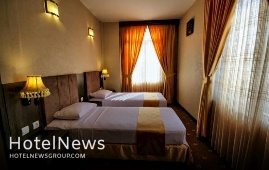
A total of 2007 beds is expected to be added to the hospitality sector of West Azarbaijan province, the provincial tourism chief has said. Currently, 41 tourism-related projects including hotels, apartment hotels, eco-lodges, and tourist complexes are underway across the northwestern province, Jalil Jabbari announced on Sunday. The province will increase its accommodation capacity by 974 rooms and 2007 beds through the opening of the mentioned ongoing projects, the official added. So far, the projects have progressed by 42 percent, he noted. Back in April, the official announced that tourism-related projects generated 1,767 job opportunities across the province during the past Iranian calendar year 1399 (ends March 21). “The largest number of jobs is related to the issuance of licenses for handicraft producers, which has led to the employment of 549 persons,” he noted. Iran considers reopening borders to foreign vacationers as its new tourism minister has said the government will soon scrap visa restrictions. Though international tourism has revealed signs of a rebound as some destinations eased travel restrictions over the past couple of months, the lack of international coordination and slow vaccination rates in several countries and regions suggest it may need a longer time to bounce back. On the one hand, according to the latest edition of the UNWTO World Tourism Barometer, an estimated 54 million tourists crossed international borders in July 2021, down 67% from the same month in 2019, but the strongest results since April 2020. This compares to an estimated 34 million international arrivals recorded in July 2020, though well below the 164 million figure recorded in 2019. On the other hand, another research conducted by Oxford Economics on behalf of the World Travel and Tourism Council (WTTC) reveals that countries’ GDP is expected to increase only by less than one-third, as tourism is recovering even slower than expected. The research was based on the current vaccination rates globally, consumer confidence, and less stringent entry and travel restrictions in the world. However, prospects for September-December 2021 remain mixed, according to the latest UNWTO Panel of Experts survey, with 53% of respondents believing the period will be worse than expected. Only 31% of experts expect the point to better results towards the end of the year. The survey also shows that most tourism professionals continue to expect a rebound driven by unleashed pent-up demand for international travel in 2022, mostly during the second and third quarters. West Azarbaijan embraces a variety of lush natural sceneries, cultural heritage sites, and museums including the UNESCO sites of Takht-e Soleyman and Qareh Klise (St. Thaddeus Monastery), Teppe Hasanlu, and the ruined Bastam Citadel. The region was home to several ancient civilizations. According to Britannica, it was conquered by Alexander the Great in the 4th century BC and was named Atropatene after one of Alexander’s generals, Atropates, who established a small kingdom there. Ultimately, the area returned to the Persian (Iranian) rule under the Sasanians in the 3rd century CE.
Create: Oct 13, 2021 Edit: Oct 13, 2021 Regional News
The enigmatic Zoroastrian Towers of Silence are set on two lonely, barren hilltops on the southern outskirts of Yazd in central Iran. According to a tradition dating back over 3,000 years, dead bodies were left on top of those open towers – which are also called dakhmas -- to be slowly disengaged or picked apart by desert vultures. Under ancient Zoroastrian beliefs about the purity of the Earth, dead bodies were not buried but left in these uncovered stone towers so that vultures could pick the bones clean. Narratives say that men’s corpses were placed in the outer circle, while women’s were left in the middle, and children in the inner-most ring. Bodies were then left until their bones were bleached by the elements and stripped by the vultures. After the process of purification, bones were placed in ossuaries near, or inside the towers. Ossuaries from these rituals have been discovered from the 4th and 5th centuries BC. At the foot of the hills are several other abandoned Zoroastrian buildings, including a defunct well, cistern, kitchen, and a lavatory. As Iran developed and urbanized, dakhmas became increasingly closer to city limits, severely curtailing their use. Since the 1970s, the use of dakhmas has been illegal in Iran, forcing orthodox Zoroastrians to adapt to new burial methods. According to Encyclopedia Britannica, such towers are about 25 feet (8 m) high, built of brick or stone, and contain gratings on which the corpses are exposed. After vultures have picked the bones clean, they fall into a pit below, thereby fulfilling the injunction that a corpse must not suffer contact with either fire or earth. Zoroastrian Towers of Silence are currently one of the famed travel destinations of Yazd, which is a cradle of Zoroastrianism. In July 2017, the historical texture of the city of Yazd was named a UNESCO World Heritage. Wedged between the northern Dasht-e Kavir and the southern Dasht-e Lut on a flat plain, the oasis city enjoys a very harmonious public-religious architecture that dates from different eras. With its winding lanes, a forest of badgirs (wind catchers), mud-brick houses, atmospheric alleyways, and centuries of history, Yazd is a delightful place to stay, referring to as a ‘don't miss’ destination by almost all travel associates in the region. Yazd Jameh Mosque, Dowlatabad Garden, the Yazd Atash Behram, also known as Atashkadeh-e Yazd, Towers of Silence, and adjacent desert landscape are among its tourist sites. Here is a selection of comments that visitors to the Zoroastrian Towers of Silence have posted to TripAdvisor, one of the most popular travel websites in the world: ‘Wonderful’ Should be visited to understand the ancient beliefs of Zoroastrians... This is a place where are the Zoroastrians buried their dead in the sky... (Fatih U from Izmir, Turkey) ‘Eerie’ A must site to visit if you are in Yazd to check out how the Zoroastrians dispose of their dead as they believed that after death the soulless body is impure and by burying the impure corpse in the ground, the soil becomes contaminated with impurity. (shadgerami from Nikolayevsk-on-Amur, Russia) ‘An extraordinary site’ We had planned to visit a dakhma when we toured Uzbekistan but had to give it a miss, so I was eager to visit these in Yazd. I had not realized that buildings are having a ritual function associated with the dakhma. Each family has its own building where a final funerary meal is eaten before the deceased is taken to the dakhma for excarnation. It was fascinating to walk around that part of the site before ascending the dakhma. The ascent is quite steep but aided by proper steps. Once in the main platform, there are excellent information boards in English explaining the processes undertaken. (Rod F from Royal Wootton Bassett, UK) ‘Spookily beautiful’ It is one of the most interesting sites we visited on our trip to Iran and one of the greatest reasons to add Yazd to the tour program. Totally recommended! (Muge S from Istanbul, Turkey) ‘A unique place to visit’ I can imagine how hot it must be here in the summer... we visited Yazd at Christmas time and the weather was perfect, sunny but not too hot. Climbing up to the hill makes you sweat but standing right where the corpses were left is a unique experience that catches one’s imagination. There are helpful postings in English that help you understand the context and the customs. You really can’t miss this if you visit Yazd. (Joscar00 from Stockholm, Sweden) ‘Interesting history!’ Easy walk/hike to the top. One of the towers is on a much higher level than the other. Best time to go early morning or before the sunset. (Aida B from Los Angeles) ‘Very interesting place with strong energy flow’ Don’t miss the whole story of this place as it makes it so unique and special. Going up is essential to see the whole place. Also, it gives good views around. There is very strong energy there. Going up to one of the towers is rather enough but you can choose the less popular one. This place is worth 20 min drive from the city center. (Very-sunny from Lodz, Poland) ‘A very interesting and beautiful place’ For millennia and until recently, in the 1970s, this place was used to dispose of the dead, a high priest would chop the pieces of the bodies to be fed to the birds. It is located outside the city and you can visit it on tour or by taxi. There are some temples or buildings at ground level and then you have the two hills with their sanctuaries on top. A great experience. (Etienne T. form New York) ‘Must do in Yazd’ A unique place to visit. Read a bit about the background before you come as all explanation is only in Farsi. Walk up the tower and try to imagine how the burial ceremony must have been like in those days. A must-do when in Yazd. (Isabella Deruiter form Rotterdam, the Netherlands) ‘Iconic place in Yazd with very interesting history’ This place is an essential part of the Zoroastrian religion, where the followers lay their dead loved ones' bodies at the top of the tower for the scavenging birds and weather to 'disintegrate' the bodies. The ascent to the top requires a basic level of fitness but the view of Yazd city from the top is good. I remember seeing motorbikes that bring you to the top too. (Wei T. from Singapore)
Create: Oct 13, 2021 Edit: Oct 13, 2021 Regional News
The private sector has invested 22 trillion rials (some $523 million at the official exchange rate of 42,000 rials per dollar) in the tourism sector of the northeastern province of North Khorasan during the first half of the current Iranian calendar year (started March 21). This investment has been put into 12 ongoing projects across the province, which are being carried out by the private sector, the provincial tourism chief has announced. A greater volume of investments in the tourism industry is required to accomplish the efforts being made to present the province in a true and correct light to the international community, Ali Mostofian said on Monday. Local travel insiders believe that traveling in North Khorasan is gaining momentum by degrees, creating lucrative opportunities for the tourism industry. According to Lonely Planet, most foreign tourists pass straight through North Khorasan in transit between Mashhad and Gorgan, but if you have time to explore, it's worth diverting south from the capital, Bojnurd, towards Esfarayen, famed for its wrestling tournaments, the remarkable citadel of Belqays and the partly preserved stepped village of Roein some 20km north.
Create: Oct 13, 2021 Edit: Oct 13, 2021 Regional News
UNWTO and Netflix have partnered on the publication of a report which looks at the role of film and series as drivers for tourism and cultural affinity. The Global Report on Cultural Affinity and Screen Tourism explores the growing affection one has towards a particular country or culture displayed on the screen. The findings of the research were presented in Madrid against the backdrop of the Iberseries Platino Industria - the largest international event for professionals linked to the audiovisual industry in Spanish and Portuguese. The report’s ultimate goal is to support policymakers and key stakeholders within the tourism sector to implement policies that make their destinations attractive for audio-visual producers. At the same time, it aims to help in the building of focused strategies to promote tourism and consumption of local culture, investing in skills and training to develop the local film and creative sectors to ensure a high level of talent, infrastructure and production capacity and integrating tourism and showcasing culture at film festivals to deepen the global audiences’ knowledge. UNWTO Secretary General Zurab Pololikashvili says: “Both tourism and the audiovisual sectors celebrate and promote culture, support jobs and provide opportunities in diverse locations. The joint work of UNWTO and Netflix will help destinations realize the potential benefits of screen tourism. Dean Garfield, Vice-President, Public Policy, Netflix: “As highlighted in this research, we have been able to demonstrate conclusively what we instinctively already believed, which is that alongside the desire to travel and visit destinations, exposure to screen content also leads to greater interest in heritage, culture, language, and developing interpersonal relationships. This truly demonstrates that the creative industries, cultural exchange, storytelling, and tourism are all interlinked and can transform the way communities perceive and connect with each other.” Following the presentation of the Global Report, experts on tourism and the audio-visual industry shared their knowledge and insights into changing trends in screen tourism, its positive impacts on strengthening cultural affinity and the role of online streaming services in promoting tourism and cultural affinity between people, cultures and countries in line with the 2030 Agenda. The event also served to underline how public-private partnerships can support destinations to promote themselves as attractive locations for audio-visual producers.
Create: Oct 11, 2021 Edit: Oct 11, 2021 International News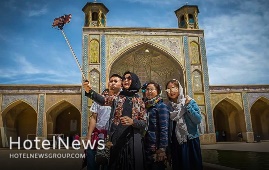
Though international tourism has revealed signs of a rebound as some destinations eased travel restrictions over the past couple of months, the lack of international coordination and slow vaccination rates in several countries and regions suggest it may need a longer time to bounce back. On the one hand, according to the latest edition of the UNWTO World Tourism Barometer, an estimated 54 million tourists crossed international borders in July 2021, down 67% from the same month in 2019, but the strongest results since April 2020. This compares to an estimated 34 million international arrivals recorded in July 2020, though well below the 164 million figure recorded in 2019. On the other hand, another research conducted by Oxford Economics on behalf of the World Travel and Tourism Council (WTTC) reveals that countries’ GDP is expected to increase only by less than one-third, as tourism is recovering even slower than expected. The research was based on the current vaccination rates globally, consumer confidence, and less stringent entry and travel restrictions in the world. However, prospects for September-December 2021 remain mixed, according to the latest UNWTO Panel of Experts survey, with 53% of respondents believing the period will be worse than expected. Only 31% of experts expect the point to better results towards the end of the year. The survey also shows that most tourism professionals continue to expect a rebound driven by unleashed pent-up demand for international travel in 2022, mostly during the second and third quarters. Almost half of all experts (45%) continue to see international tourism returning to 2019 levels in 2024 or later, while 43% point to a recovery in 2023. By regions, the largest share of experts pointing to a return to 2019 levels in 2024 or later are in Asia and the Pacific (58%). In Europe, half of the respondents indicate this could happen in 2023. West Asia is the most optimistic, with a full recovery expected by 2022. The sector needs leaders who can recognize ideas that will make a difference, who will innovate and back entrepreneurs and start-ups. As mentioned by the UNWTO Barometer, most destinations reporting data for June and July 2021 saw a moderate rebound in international arrivals compared to 2020. Nevertheless, 2021 continues to be a challenging year for global tourism, with international arrivals down 80% in January-July compared to 2019. Asia and the Pacific continued to suffer the weakest results in the period January to July, with a 95% drop in international arrivals compared to 2019. West Asia (-82%) recorded the second-largest decline, followed by Europe and Africa (both -77%). The Americas (-68%) saw a comparatively smaller decrease, with the Caribbean showing the best performance among world subregions. Meanwhile, some small islands in the Caribbean, Africa, and Asia and the Pacific, together with a few small European destinations recorded the best performance in June and July, with arrivals close to, or sometimes exceeding pre-pandemic levels.” Iran preparing for tourism rebound Iran considers reopening borders to foreign vacationers as its new tourism minister has said the government will soon scrap visa restrictions. Cultural Heritage, Tourism and Handicrafts Minister Ezzatollah Zarghami made the announcement last month following his conversations with President Seyyed Ebrahim Raisi, however, the minister did not specify the date upon which those regulations would be scrapped. According to some sources, fully vaccinated travelers would be embraced first under the updated regulations. The average of international travels to and from the Islamic Republic fell by 80 percent during the past Iranian calendar year 1399 (ended on March 20, 2021) from a year earlier. “During this period, 4,343,163 passengers entered the country, which included 3,030,464 Iranian passengers and 512,699 international travelers,” according to Arezou Ghaniun, an official with the Islamic Republic of Iran's Customs Administration. “From the beginning of 1399 to the end of it, we saw a significant reduction in passenger traffic to the country or vice versa in land, sea, rail and air borders, which were caused by various coronavirus restrictions.” Months of steep recession has taken its toll. Many travel insiders, hoteliers, and tour operators have faced big dilemmas such as bankruptcy, unemployment, debts, and the prospects of not being competitive on the international level. Panels of travel experts have mapped out new marketing strategies hoping Iran’s tourism would get back on its feet once again. For instance, the Head of the Iranian Tour Operators Association has said the international tourist flow to Iran will return to normal until 2022. Iran is potentially a booming destination for travelers seeking cultural attractions, breathtaking sceneries, and numerous UNESCO-registered sites. Under the 2025 Tourism Vision Plan, Iran aims to increase the number of tourist arrivals from 4.8 million in 2014 to 20 million in 2025. Domestic tourism as a propeller in COVID era The annual UNWTO Executive Training Programme, which was held in the Maldives from October 5 to 8, sharpened the focus on harnessing the power of domestic tourism to drive recovery and growth in destinations across Asia and the Pacific. Now in its 15th year, the event brought together representatives of 25 countries, with six (Iran, Sri Lanka, Afghanistan, Bangladesh, Mongolia, and Nepal) joining hosts in the Maldives to attend the training sessions in person. Reflecting the restart of domestic tourism ahead of international tourism, both across Asia and the Pacific and globally, the event focused on enabling destinations of all sizes to capitalize on this trend. Opening the event, UNWTO Secretary-General Zurab Pololikashvili stressed that, as tourism restarts in many parts of the world, “the sector needs leaders who can recognize ideas that will make a difference, who will innovate and back entrepreneurs and start-ups”. Confidence in travel rising sluggishly Such an enhancement was underpinned by the reopening of many destinations to international travel, mostly in Europe and the Americas. The relaxation of travel restrictions for vaccinated travelers, coupled with the progress made in the roll-out of COVID-19 vaccines, contributed to lifting consumer confidence and gradually restoring safe mobility in Europe and other parts of the world. In contrast, most destinations in Asia remain closed to non-essential travel. According to UNWTO Secretary-General Zurab Pololikashvili, there is a strong demand for international tourism, and many destinations have started welcoming visitors back safely and responsibly. However, the true restart of tourism and the benefits it brings remains on hold as inconsistent rules and regulations and uneven vaccination rates continue to affect confidence in travel,” Pololikashvili says.
Create: Oct 10, 2021 Edit: Oct 10, 2021 Regional News
A project to restore and reinforce the ancient Saint John Church has begun in the village of Sohrol, near Shabestar city in East Azarbaijan province, the deputy provincial tourism chief has announced. The project involves the reinforcement of the church’s main structure and its foundation, as well as repairing the damaged parts, Alireza Quchi said on Saturday. Rehabilitation work has been ongoing on the historical structure for the past several years in order to make it stronger, the official added. Last year retaining walls for stabilizing soil around the monument were constructed to prevent it from being swept away by a landslide, he explained. Also known as Sohraqeh Church, the Armenian Catholic church was built in circa 5th century, but it was rebuilt on the older church foundation in 1840 by Samson Makintsev, a Russian general in the service of Iran during the Qajar era. The historical monument was inscribed on the National Heritage list in 1968. Iran is home to several ancient and historical churches. Christians, Jews, and Zoroastrians are the most significant religious minorities in the country with Christians constituting the bulk. Iranian Azarbaijan was the center of several ancient civilizations. It formed part of Urartu and later of Media. In the 4th century BC, it was conquered by Alexander the Great and was named Atropatene after one of Alexander’s generals, Atropates, who established a small kingdom there. The area returned to Persian (Iranian) rule under the Sasanians in the 3rd century CE.
Create: Oct 10, 2021 Edit: Oct 10, 2021 Regional News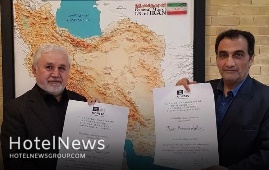
Certificates of registration of four Iranian UNESCO World Heritage sites have been handed over to the tourism ministry, the deputy tourism minister has announced. The Ministry of Cultural Heritage, Tourism, and Handicrafts has received registration certificates of four cultural heritage, which have been listed by UNESCO over the last two years, IRNA quoted Ali Darabi as saying on Friday. The ministry has received certificates for Trans-Iranian Railway, Cultural Landscape of Uramanat as tangible cultural heritages as well as the art of miniature, jointly with Azerbaijan, Turkey, and Uzbekistan and pilgrimage to St. Thaddeus jointly with Armenia, as UNESCO Intangible Cultural Heritage, the official added. Having a global register of tangible and intangible heritage is vital because these works, regardless of race, nationality, and religion, belong to all human society, and all governments and nations have a duty to preserve and protect them, even during times of war, he noted. Increased recognition of a country’s cultural heritage on the World Heritage list certainly contributes to the development of the tourism industry and businesses related to it, and most importantly, introduces the culture and civilization of a nation to the world, he explained. With 26 World Heritage Sites, Iran ranks 10th in the world in terms of the number of historical monuments and sites registered on the UNESCO World Heritage list. Before the Islamic Revolution, Persepolis, Naghsh-e Jahan Square, and Choghaznabil were the only three UNESCO-listed monuments, but today the number has been increased this number to 26 historical sites. Trans-Iranian Railway The railway can be regarded as a turning point for comprehensive developments in Iran. These developments include a wide spectrum of various economical, commercial, social, cultural, and even political aspects in a sensitive and important period of contemporary world history. Consequently, the 1394 kilometers long Trans-Iranian Railway was built with a width of 1435mm and 90 working stations along its route. It starts at a point north of Torkaman port located southeast of the Caspian Sea. After going through Sari and Qaem-Shahr cities, the railway enters the mountainous region of Alborz through the high Firooz-kooh Pass which is linked with Tehran and Varamin Plain by numerous bridges and tunnels. Further on after crossing the flatlands of Qom and Arak, the Trans-Iranian Railway penetrates Zagros highlands in Lorestan Province and passing through a large number of tunnels and bridges reaches Andimeshk situated in the low Kuzestan Plain. Finally extending to the vicinity of Dezful, Ahwaz, and its grand bridge on Karoon, the Trans-Iranian Railway is divided into two branches ending separately at Khoram-Shahr and Imam-Khomeini ports on the Persian Gulf. Cultural Landscape of Uramanat Stretched on the slopes of Sarvabad county, and shared between the provinces of Kordestan and Kermanshah, the rural area of Uramanat embraces dense and step-like rows of houses in a way that the roof of each house forms the yard of the upper one, a feature that adds to its charm and attractiveness. As the cultural landscape covers 300 villages and in terms of architecture and landscape, it is one of the most beautiful and presentable heritages in the world. Uraman is considered a cradle of Kurdish art and culture from the days of yore. Pirshalyar, which is named after a legendary local figure, is amongst time-honored celebrations and rituals that are practiced annually across the region. The art of miniature The miniature is a type of two-dimensional artwork that involves the design and creation of small paintings on books, paper-mâché, rugs, textiles, walls, ceramics, and other items using raw materials such as gold, silver, and various organic substances. Historically, the miniature was exemplified by book painting in which the text was supported visually, but the element has evolved and can also be observed in architecture and as an adornment in public spaces. The miniature displays a specific type of perspective in which the size of the figures changes according to their importance - a key difference between realistic and naturalistic styles. Though it has existed for centuries, it continues to develop and thus strengthens the bonds between past and present. Traditional painting principles and techniques are preserved, but artists also bring individual creativity into the process. Pilgrimage to the St. Thaddeus The annual three-day pilgrimage to St. Thaddeus Apostle Monastery in northwestern Iran is held each July. The pilgrimage venerates two prominent saints: St. Thaddeus, one of the first apostles preaching Christianity, and St. Santukhd, the first female Christian martyr. The bearers of the element are the Armenian population in Iran, Iranian-Armenians residing in Armenia, and followers of the Armenian Apostolic Church. Pilgrims gather in Tabriz before departing for the monastery. They cover 700 kilometers from Yerevan to the monastery annually. The commemoration ceremony includes special liturgies, processions, prayers, and fasting. It culminates in a Holy Mass with Holy Communion. Special times are set aside for traditional Armenian folk performances and Armenian dishes are served. The pilgrimage is the primary social and cultural event of the year.
Create: Oct 10, 2021 Edit: Oct 10, 2021 Regional News
